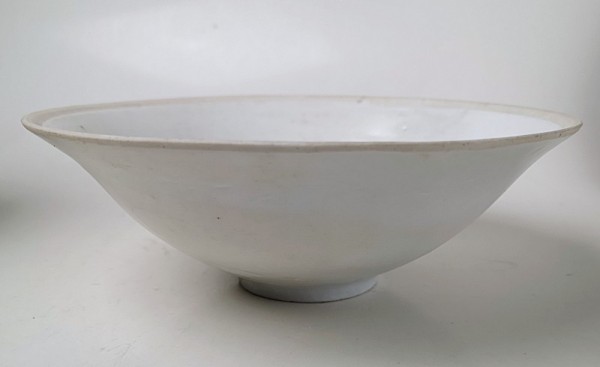
Bowl with everted rim, Yuan dynasty (1279-1368) Blanc-de-Chine from Dehua, Fujian province. Height: 7,3 cm, Diam: 21.1 cm (8.3 inches).
JE Nilsson Coll. © 2025
Common Ceramic Rim Profiles
A rim or mouth of a vessel that curves gently outward from the vertical axis of the body. Facilitates pouring and adds aesthetic appeal. This feature is common in both utilitarian and refined ceramics across cultures and periods. In Chinese porcelain, it is often seen on bowls, cups, and libation vessels, where the slight outward flare adds elegance and facilitates pouring or drinking. The term is widely used in archaeological and art historical descriptions to distinguish this profile from vertical, straight, or inward-curving rims.
The rim extends straight up, aligning with the vessel's sides. Common in utilitarian wares, providing structural simplicity.
The rim curves inward toward the vessel's center. Helps contain contents, often seen in storage jars.
The rim flares outward at a more pronounced angle than an everted rim. Refers to a more dramatic or angled outward spread, not a light outward turn. Enhances ease of access and pouring; often decorative.
The rim turns back toward the vessel's body, creating a rolled or thickened edge. Adds strength and can be decorative.
For an external page on various rim types in archeological context: Shapes, ceramic
A